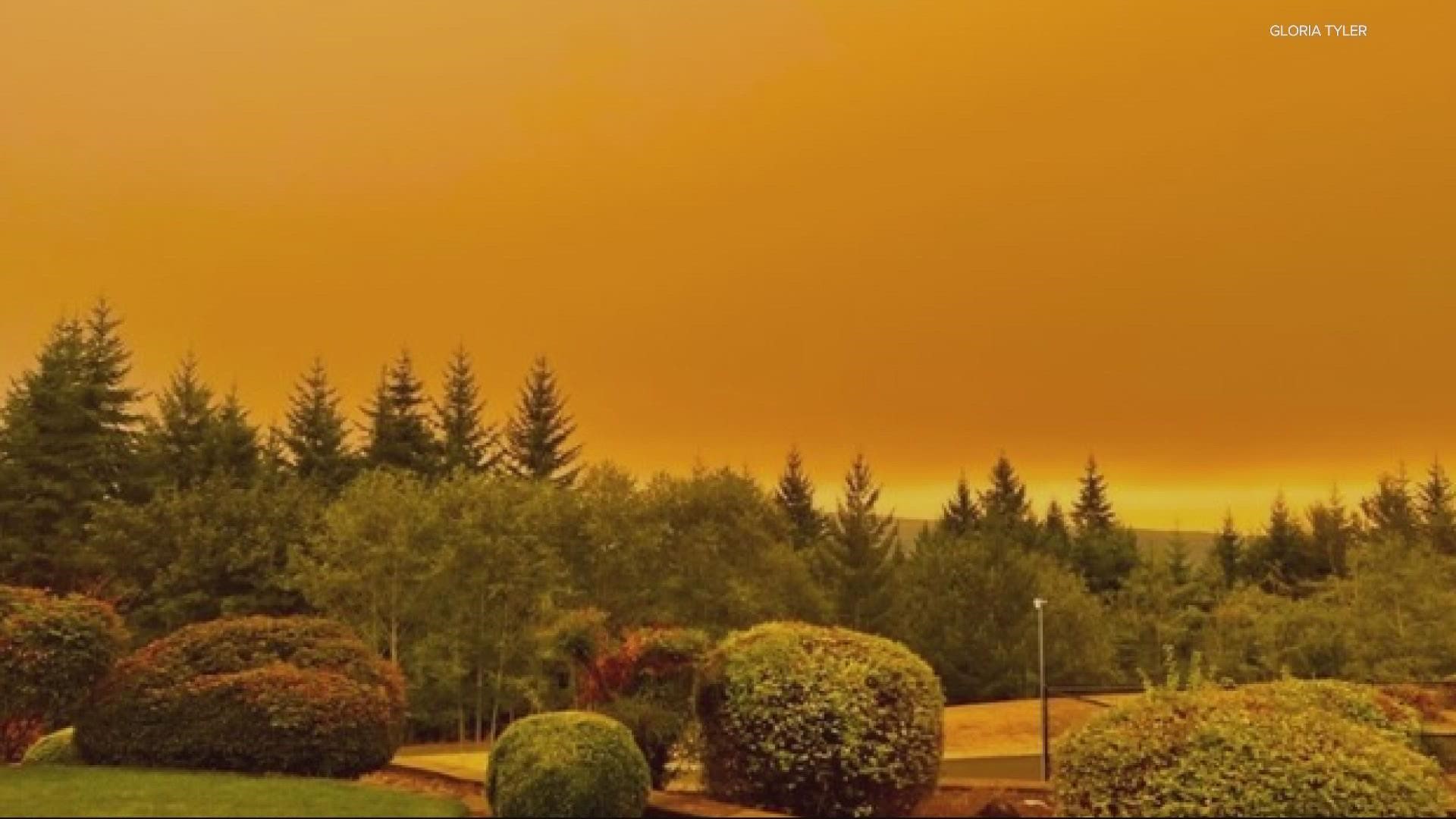PORTLAND, Ore. — With several fires burning across the state, many Oregonians woke up to hazy skies Saturday morning, with air quality ranging from healthy to very unhealthy, depending on the location, and conditions stayed the same or got worse in most places over the course of the day.
A look at the interactive Air Quality Index (AQI) map from the Oregon Department of Environmental Quality (DEQ) on Saturday morning showed air quality in the moderate range in much of the state, but worse in some areas.
For example, in Oakridge, where the Cedar Creek Fire is burning, the air quality rated as very unhealthy. And in areas of northeast Oregon, where the Double Creek Fire is burning, the air quality rated as unhealthy.
As of late Saturday afternoon, most of the Portland metro area, north coast, Columbia River Gorge, Bend and southwest Oregon areas all still showed moderate air quality, but a significant portions of the Willamette Valley were rated unhealthy for sensitive groups. Oakridge was raised to hazardous, and Detroit and Cottage Grove were both rated unhealthy.
KGW meteorologist Chris McGinness reported Saturday morning that the reason the skies in Portland and much of northwest Oregon were so hazy is because the smoke plume from the Cedar Creek Fire burning east of Eugene made a big shift overnight.
How to check the air quality in your area
The DEQ and partner agencies monitor smoke levels and provide reports on how clean the air is and any potential health risks.
People who want to know what the air quality in their neighborhood looks like can visit the Air Quality Index (AQI) interactive map on the DEQ website. The AQI map uses a color-coded system ranging from "Good" (labeled by green dots), which means air pollution posts little to no risk, to "Hazardous" (labeled by maroon dots), meaning air quality is unhealthy for everyone.
The Environmental Protection Agency also has an online tool where people can type in their zip code, city or state to view the air quality index.
How to protect yourself from smoke
Smoke can irritate the eyes and lungs. People most at risk include infants, young kids, older adults and people with certain medical conditions such as heart or lung disease.
The DEQ recommends people take precautions when smoke levels are high:
- Stay indoors and keep windows and doors closed
- Avoid outdoor activities
- Use high-efficiency particulate air (HEPA) filters in indoor ventilation systems or portable air purifiers
The DEQ notes that cloth, dust and surgical masks don't protect people from harmful particles in smoke. A particulate respirator marked with the word "NIOSH" can help prevent smoke exposure.

